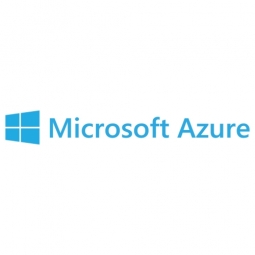技术
- 分析与建模 - 机器学习
适用行业
- 教育
- 医疗保健和医院
适用功能
- 产品研发
用例
- 预测性维护
服务
- 数据科学服务
关于客户
Alder Hey 儿童医院是英国领先的医疗保健提供者。它是欧洲最大、最繁忙的儿童医院之一,一个多世纪以来为儿童和青少年提供创新、高质量的护理。 2015 年,该医院开设了最先进的设施以及一个新的研究、创新和教育中心,这是该国同类中最大的中心之一。该医院已将人工智能 (AI) 确定为其三大战略重点之一。
挑战
Alder Hey 儿童医院是欧洲最大、最繁忙的儿童医院之一,生成大量有关其运营、患者就诊路径、医疗挑战、治疗、反应等的数据。医院认识到这些数据的潜在价值,但需要一种有效利用它的方法。主要挑战之一是预测床位利用率,这是医院管理的一个关键方面。医院还必须解决人工智能在医疗保健应用中的数据安全、道德和治理方面的担忧。
解决方案
该医院与 Microsoft 合作释放其数据的价值。首批项目之一是开发人工智能算法来预测床位空间利用率。该算法通过数据学习来预测不同严重程度的患者数量、病情危重以及每天需要的入院人数。该预测模型是使用 Microsoft Power BI 创建的。除此之外,该医院还与 Microsoft 合作,利用 Azure、物联网和机器学习技术开展多个项目。医院还采取深思熟虑的方案设计,确保正确的道德、治理和标准操作程序到位。
运营影响

Case Study missing?
Start adding your own!
Register with your work email and create a new case study profile for your business.
相关案例.

Case Study
Hospital Inventory Management
The hospital supply chain team is responsible for ensuring that the right medical supplies are readily available to clinicians when and where needed, and to do so in the most efficient manner possible. However, many of the systems and processes in use at the cancer center for supply chain management were not best suited to support these goals. Barcoding technology, a commonly used method for inventory management of medical supplies, is labor intensive, time consuming, does not provide real-time visibility into inventory levels and can be prone to error. Consequently, the lack of accurate and real-time visibility into inventory levels across multiple supply rooms in multiple hospital facilities creates additional inefficiency in the system causing over-ordering, hoarding, and wasted supplies. Other sources of waste and cost were also identified as candidates for improvement. Existing systems and processes did not provide adequate security for high-cost inventory within the hospital, which was another driver of cost. A lack of visibility into expiration dates for supplies resulted in supplies being wasted due to past expiry dates. Storage of supplies was also a key consideration given the location of the cancer center’s facilities in a dense urban setting, where space is always at a premium. In order to address the challenges outlined above, the hospital sought a solution that would provide real-time inventory information with high levels of accuracy, reduce the level of manual effort required and enable data driven decision making to ensure that the right supplies were readily available to clinicians in the right location at the right time.

Case Study
Gas Pipeline Monitoring System for Hospitals
This system integrator focuses on providing centralized gas pipeline monitoring systems for hospitals. The service they provide makes it possible for hospitals to reduce both maintenance and labor costs. Since hospitals may not have an existing network suitable for this type of system, GPRS communication provides an easy and ready-to-use solution for remote, distributed monitoring systems System Requirements - GPRS communication - Seamless connection with SCADA software - Simple, front-end control capability - Expandable I/O channels - Combine AI, DI, and DO channels

Case Study
Driving Digital Transformations for Vitro Diagnostic Medical Devices
Diagnostic devices play a vital role in helping to improve healthcare delivery. In fact, an estimated 60 percent of the world’s medical decisions are made with support from in vitrodiagnostics (IVD) solutions, such as those provided by Roche Diagnostics, an industry leader. As the demand for medical diagnostic services grows rapidly in hospitals and clinics across China, so does the market for IVD solutions. In addition, the typically high cost of these diagnostic devices means that comprehensive post-sales services are needed. Wanteed to improve three portions of thr IVD:1. Remotely monitor and manage IVD devices as fixed assets.2. Optimizing device availability with predictive maintenance.3. Recommending the best IVD solution for a customer’s needs.

Case Study
HaemoCloud Global Blood Management System
1) Deliver a connected digital product system to protect and increase the differentiated value of Haemonetics blood and plasma solutions. 2) Improve patient outcomes by increasing the efficiency of blood supply flows. 3) Navigate and satisfy a complex web of global regulatory compliance requirements. 4) Reduce costly and labor-intensive maintenance procedures.

Case Study
Cloud-based healthcare solution for Royal Philips
Royal Philips wanted to launch its cloud-based healthcare solution HealthSuite Digital Platform in China to deliver services to help cope with challenges related to urbanization and population growth. Philips wanted to achieve this goal by combining mobile, cloud computing and big data technologies. To bring this platform and product to market, Philips required cloud computing and local technical service capabilities in China, in addition to a flexible IT infrastructure that could handle user requests.








